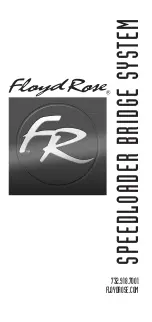
10-4
Triggering
Event detection
In general, operation is held up at an Event Detector until the programmed event occurs.
Note however, that if an event detector has a bypass, operation can be programmed to loop
around the event detector.
Arm layer
Event Detector Bypass
— As shown in Figure 10-1, there is a bypass for the Arm Event
Detector. This bypass can only be used if TLINK or STEST is the selected Arm-In Event. The
bypass serves to “jump-start” operation. With the event detector bypass set to ONCE, operation
will loop around the Arm Event Detector when the output is turned ON.
The programmable arm-in events for the Arm Layer are described as follows:
IMMEDIATE
— Event detection occurs immediately allowing operation to continue.
GPIB
— Event detection occurs when a bus trigger (GET or *TRG) is received.
TIMER
— With the Timer selected, event detection occurs immediately when the output is
turned ON. On repeated passes via “Another Arm ? Yes”, event detection occurs when the pro-
grammed timer interval expires. If operation takes the “Another Arm ? No” route, the Timer
resets allowing event detection to again occur immediately.
MANUAL
— Event detection occurs when the TRIG key is pressed.
TLINK
— Event detection occurs when an input trigger via the Trigger Link input line is
received (see Trigger link for more information). With TLink selected, you can loop around the
Arm Event Detector by setting the event detector bypass to ONCE.
↓
STEST
— Event detection occurs when the SOT (start of test) line of the Digital I/O port
is pulsed low. This pulse is received from the handler to start limit testing. See Section 11.
↑
STEST
— Event detection occurs when the SOT (start of test) line of the Digital I/O port
is pulsed high. This pulse is received from the handler to start limit testing. See Section 11.
↑↓
STEST
— Event detection occurs when the SOT (start of test) line of the Digital I/O port
is pulsed either high or low. This pulse is received from the handler to start limit testing. See
Section 11.
NOTE
STEST can be used only at the beginning of a sweep and should not be used to trig-
ger each point in a sweep.
Содержание 6430
Страница 26: ......
Страница 32: ......
Страница 78: ...2 14 Connections ...
Страница 98: ...3 20 Basic Source Measure Operation ...
Страница 138: ...5 30 Source Measure Concepts ...
Страница 156: ...6 18 Range Digits Speed and Filters ...
Страница 168: ...7 12 Relative and Math ...
Страница 176: ...8 8 Data Store ...
Страница 202: ...9 26 Sweep Operation ...
Страница 248: ...11 22 Limit Testing ...
Страница 310: ...16 6 SCPI Signal Oriented Measurement Commands ...
Страница 418: ...17 108 SCPI Command Reference ...
Страница 450: ...18 32 Performance Verification ...
Страница 477: ...A Specifications ...
Страница 489: ...B StatusandErrorMessages ...
Страница 498: ...B 10 Status and Error Messages ...
Страница 499: ...C DataFlow ...
Страница 503: ...D IEEE 488BusOverview ...
Страница 518: ...D 16 IEEE 488 Bus Overview ...
Страница 519: ...E IEEE 488andSCPI ConformanceInformation ...
Страница 523: ...F MeasurementConsiderations ...
Страница 539: ...G GPIB488 1Protocol ...
Страница 557: ......
















































